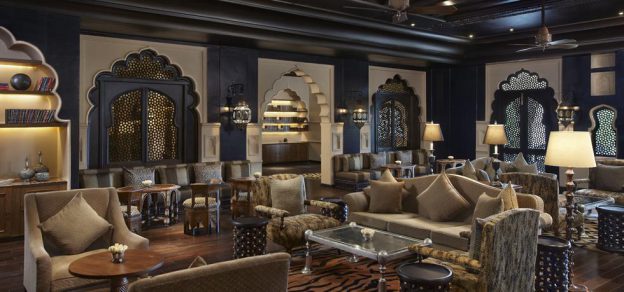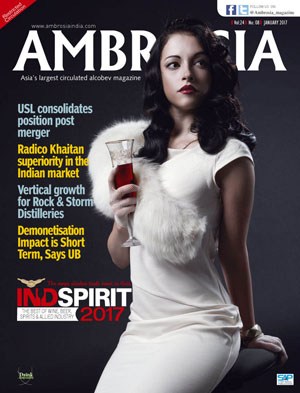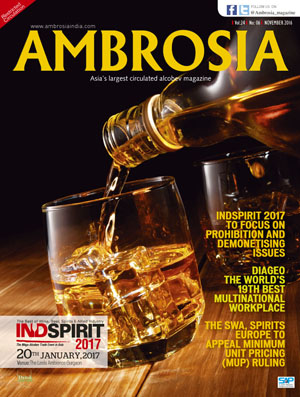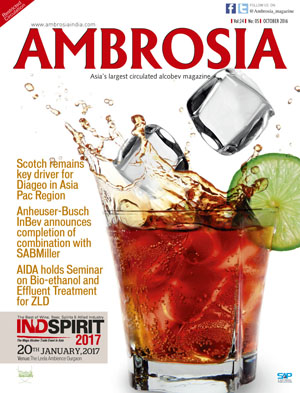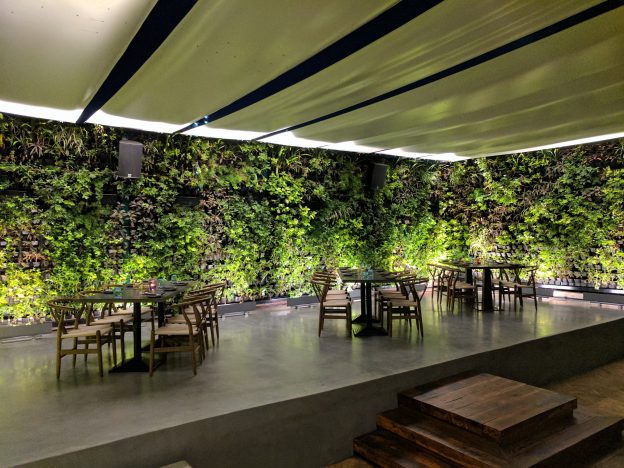
Author Archives: Bhavya Desai

JAN 2017 Magazine
NOV 2016 Magazine
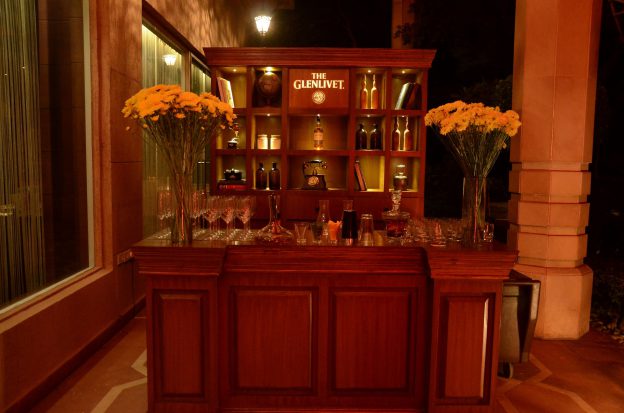
Glenlivet Founder’s Reserve Appreciation Series at Varq
The Taj Mahal Hotel, New Delhi celebrates a journey of legacies at Varq
In a constant endeavour to provide unique and memorable experiences, The Taj Mahal Hotel, New Delhi presented The Glenlivet Founder’s Reserve Appreciation Series at Varq.
The bespoke experience began with an ode to Varq – the modern Indian dining destination at the iconic Taj Mahal Hotel.
Chef Arun Sundararaj, Executive Chef at the Hotel, and Sandeep Arora, Director, Spiritual Luxury Living, unravelled the tale of Varq and traced the journey of how it became the culinary leader it is today.
The evening saw the presence of the celebrated artist, Anjolie Ela Menon who recounted her fond memories at Varq that still houses the priceless mural created by her over three decades ago. Speaking on the occasion, she briefly traced the culinary journey from Haveli to Varq and emphasised on how the present day restaurant, her “second home”, has honed the concept of pre-plated food.
Varq is symbolic of preciousness which is reflected amply in the cuisine and the décor of the restaurant. The restaurant is a harmonious blend of traditional and contemporary sophistication. Visually spectacular in every way, the restaurant is also one of the city’s finest examples of a marriage of fine dining and art. The spatial ambience comfortably engulfs the diner, immersing them into a lusciously rich experience surrounded by artefacts and treasures. One of the defining features of Varq is the mural wall created by celebrated artist Anjolie Ela Menon. Additionally, modern artworks complement the restaurant in the form of oil paintings, carvings, antiques and modern sculptures.
Speaking on the occasion, Satyajeet Krishnan, General Manager, The Taj Mahal Hotel, New Delhi said, “For over three decades, the iconic Taj Mahal, New Delhi has offered its guests unique and meaningful experiences. It is therefore, the most preferred venue to host The Glenlivet Founder’s Reserve Appreciation Series, an evening where we celebrated the culinary heritage and artistry of Varq amidst an exquisite dining experience.”
The engaging tête-à-tête was followed by a sumptuous four course dinner at Varq. Patrons indulged in signature Varq specialties including duet of subz gandheri and khurbani, smoked lamb, tomato and olive khofta, gongura lamb paired with the distinct, smooth and fruity taste of The Glenlivet Founder’s Reserve that was first envisioned in 1824. While Sandeep Arora introduced the coveted character of The Glenlivet Founder’s Reserve, a classic single malt with a contemporary twist, Chef Arun spoke of the innovative yet authentic Indian flavours that Varq stands for.
Speaking on the occasion, Chef Arun Sundararaj, Executive Chef, The Taj Mahal Hotel, New Delhi said, “Continuing our quest to offer enriching dining experiences, we are delighted to curate this exclusive celebration of legacies with a true expression of originality. Since 2008, Varq has offered authenticity of taste and artistic presentation to the people of Delhi. Each of the dishes on our menu is a craft in itself and combines the best of traditional Indian recipes with exotic ingredients to create a memorable experience.”
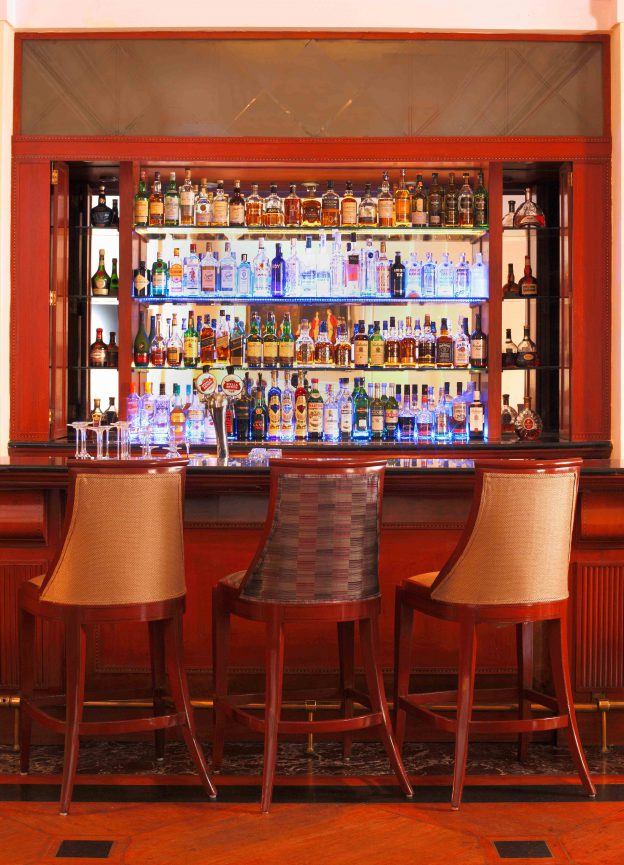
LOUNGE AND BAR
The experience of picking up exclusive and premium brands would leave you yearning for more. The sophisticate lounge would be too hard to skip without an evening cocktail.
While there are many ways to relax at the end of the day, an experience worth savouring is an evening spent at the Lounge and Bar. Offering a delightful and chic experience that is unrivalled by other lounge, it offers an easy environment that pulls you in and leaves you feeling satiated. Based on colonial theme, the bar has a unique and rare collection of ancient paintings. Besides, the bar organises theme nights like Milonga nights where Tango dancers and teaching experts give opportunity to the guests to learn this dance form.
Overlooking the crystal waters of Eros Hotel’s poolside, this sitting lounge offers an indoor seating arrangement that can accommodate up to 64 guests. It also offers a pleasant outdoor setting where one can marvel at the exceptional and pristine poolside. Set up near a spectacular and elegant landscaped garden, the delightful ambiance is accompanied by a service that is impeccable and customised to meet any demand or need. The Lounge and Bar also comes with special evenings and special moments that are reserved for all the ladies. Every week it offers a relaxing evening outing complete with delightful delicacies as well as free flowing cocktails.
Providing an exquisite blend of cocktails and delightful wine collections, Lounge and Bar balances the experience with a variety of appetising snacks. Ensuring that no part of the evening is left wanting. The Lounge and Bar also offers live music and entertainment with its delectable treats. Standing as one of the premier lounges, it offers the guests a choice between a tasteful selection of extensive wine collection or a thrilling adventure in the form of a deliciously flavoured cocktail.
Amrodtini, which is Vodka based cocktail with hint of burnt cumin gives local flavour to make it more popular. The bar also serves Hawaiian Sangrias, Fruit Sangrias, and Flavoured Margaritas. Time to time the bar organises beverage promotion. Also, special menus are designed for New Year and Christmas as well.
Toprit Saifi
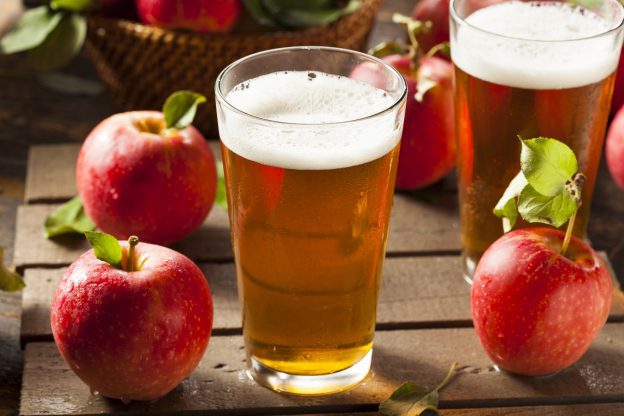
Antioxidant Activity and Phenolic Content of Apple Cider
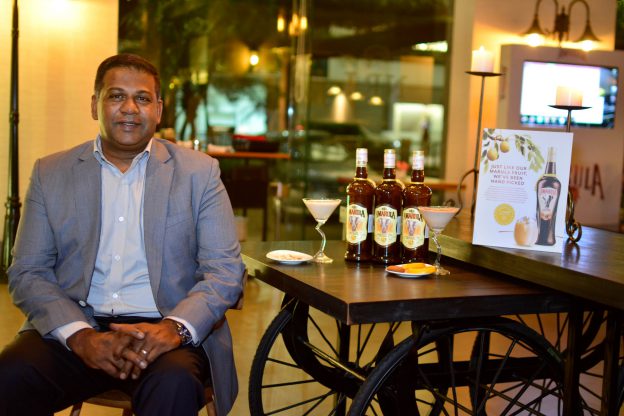
Kay Pillay, DISTELL-MD Asia Pacific and Middle East
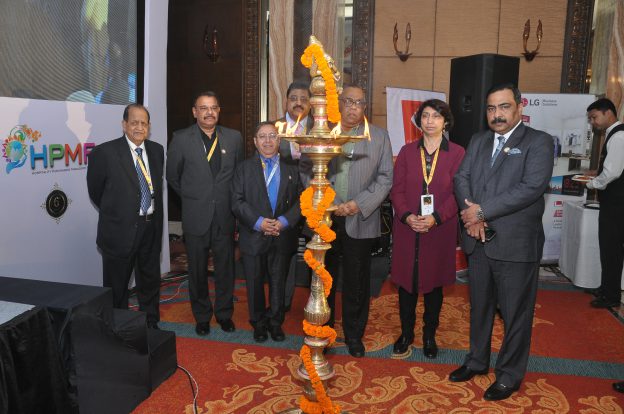
HPMF celebrates 6th Anniversary, Annual Convention & Awards at Mayfair Lagoon, Bhubaneswar
HPMF celebrates 6th Anniversary, Annual Convention & Awards at Mayfair Lagoon, Bhubaneswar
It was an event to remember for the record breaking congregation of hospitality purchasing heads, of nearly 250 professionals who networked and attended interactive knowledge based sessions, B2B Meetings and witnessed the HPMF Procurement Excellence Awards
The entire delegation of over 250 hospitality purchasing managers from across India, along with dignitaries, vendors and consultants, gathered at the verdant luxurious property of Hotel Mayfair Lagoon and Convention Center, a ‘museum, jungle and hotel rolled into one’ located in the midst of Bhubaneswar city, Odisha.
Delegates from Mumbai, Hyderabad, Pune, Ahmedabad, Bengaluru, New Delhi, Chennai, Goa, Guwahati, Jaipur, Indore, Nagpur, Vadodara, Bhubaneswar and Puri, were overwhelmed with the programme put together by Nitin Nagrale, General Secretary & Founder of HPMF and the core committee including Chairman Mohan Deshpande, General Manager Materials Hotel Aureole; Teckbahadur Sarke, Manager Hotel Sahara Star – Mumbai & Aamby Valley City – Lonavala (Pune); Harvey Rodrigues Director Procurement – Hotel Meluha The Fern and Hotel Rodas An Ecotel Hotel; Mahendra Shinde, Materials Manager – The Resort Mumbai; Ganpat Dalvi – Director Procurement Four Seasons Mumbai, Jaideep Gupta, Operations, Procurement and Pre-opening professional; and Gary Coutinho, Supply Chain Manager Devyani Airport Services.
Inaugurated by Ashok Chandra Panda, Minister of Tourism and Culture, Government of Odisha, the occasion was also graced by His Highness Giriraj Singh Lotwara, President of Shree Rajput Sabha, Jaipur; Dilip Ray, CMD of Mayfair Hotels; Debasis Pattnaik, Director, Crown Hotels; Lion Pankaj Mehta; and Souvagya Mohapatra, Executive Director, Mayfair Hotels among others.
The role of a Purchase Manager in the Hospitality industry has gone through several fundamental changes in the last few years. Many companies have shifted from a Regional unit Procurement approach to a Center-led Global Procurement strategy. The Purchase department has become a valued partner & a recognized asset who collaborates effectively across the Organization driving procurement excellence.
India’s leading Hospitality Purchasing Managers’ Forum (HPMF) In an unprecedented style organized a three-day convention for successful purchasing professionals, marking its sixth anniversary with lots of Learning and Leisure, Awards and undying Memories.
One of the key objectives was to meet, discuss & find solutions to the challenging issues faced when it comes to Procurement, Supplier Relationship Management, and strategies revolving around it, as well as to network under one roof. The highlight of the forum was also to bring industry though leaders to deliberate on the challenges faced on the talent and skill development initiatives and how to bridge the gaps in the same. Another objective is to equip the hospitality purchase professionals with the latest trends and tools so as to better manage and excel in their current functional roles. Key benefits for people participating will be to nurture existing relationships and foster new business partnerships via One to One Networking Opportunity during the entire 3 days of the event.
Highlighting the importance of purchasing managers, who are more a background artist, Mohapatra said, “From every tile in the floor to the entire structure, purchase is involved. They play an important role in material, marketing and money management.”
Debasis Pattnaik added, “Purchase managers are not visible on the foreground but they are like platelets in the blood.”
The need for HPMF is in bringing together the purchase heads of hotels on one platform to network, explore new aspects of purchasing and gather knowledge of the advantages of technology in purchase. “I am elated to host HPMF in Bhubaneswar,” said Nitin Nagrale, thanking Mayfair Hotels and the supporting vendors for successfully organizing the convention.
In continuation, Mohan Deshpande said, “Purchasing Managers are an integral part of the industry and they need to understand & showcase their own value”
Some of the Networking Professionals had this to say. “It is hard to find words to match the efforts put in by the HPMF team, in the spotless execution of this wonderful programme.” – Shiv Menon. According to Santosh Bhame, “It was very well planned, organized and executed, bundles of surprises, so many new friends, so much knowledge sharing… this is very good memory for a life time.” “Congratulations to the entire HPMF family for a very successful event. Everything was just perfect. You have raised the bar for all.” said Jairaj Singh echoing the sentiments of many of the professionals.
Sanjay Goyal said, “We had a wonderful three days of knowledge sharing, networking and fun. Thank you for executing a convention of this quality, scale, excellence in terms of content, right mix of knowledge and fun. We raise a toast and salute our soldier Nitin Nagrale for the true dedication and our solidarity.”
The Indian hospitality industry has been rapidly evolving since last two decades and has witnessed a spurt in the number of domestic and international players entering the market with ambitious and world class projects. This has resulted in quantitative and qualitative needs which are far more complex than before. Today, the hospitality procurement industry is pegged at an annual figure of US $10 billion dollar. But considering the sustained economic development and an impressive GDP ratio of India, the hospitality procurement needs are expected to grow by leaps and bounds in the coming years. The hospitality procurement is not only scattered but needed some reference body to assist them at every stage. There were no formal education institutes or bodies to assist. And also every one working in their organizations were working in isolation.
Touching upon the most important topics, experts from the hospitality industry discussed ‘Importance of Value Engineering and Life Cycle Analysis in Procurement’; ‘Work Life Balance, Vendor Relationship & Strategic Sourcing’; ‘Creative Strategies & Future of Procurement’ besides other presentations and highly inspiring motivational talks by Lion Pankaj Mehta and Pradip Almadi.
B2B Meetings
The entire buyer delegation was divided into groups of 6 members and an excellent B2B meeting schedule was organized so that all the partners could meet the buyers on one on one basis. It was a super hit session on both days as all partners not just met every attending delegate but created bond between them.
Entertainment was also an integral part of the three day event. Exhibiting their talents, purchasing managers took stage on fire with hit Bollywood old songs on the saxophone; puppet show, comedy besides multiple bands rocking on the latest numbers.
“We thank all the delegates for taking time out to be present in such large numbers, our vendors who have supported us whole heartedly and experts who have made the sessions a big success. I also take this opportunity to thank LG for once again partnering with us and making this wonderful event possible,” concluded Nitin Nagrale.
BOX
2nd HPMF Procurement Excellence Awards
This year’s Living Legend Award was conferred on Sundaram RM, Vasantabhavan Hotels India Pvt Ltd and Basil Christopher Massey, Duet India Hotels. The Life Time Achievement Award was given to Narinder Kapoor, The EIH Ltd.
There was stiff competition in the other categories and the panel of jury had to rework to emerge with the most deserving winner. “While we started planning and preparing this event more than six months back, the awards were put together in 45 days,” said Nitin Nagrale. The winners in the other categories are:
Most Innovative Procurement Person of the Year: Parag Pawar, Purchase Manager, Royal Orchid Central, Pune
Most Innovative Procurement Person of the Year: Hara Prasad Balliarsingh, Senior Manager, Mayfair Lagoon and Convention, Bhubaneswar
Best Cross Functional Procurement Leader of the Year: Mahendra Shinde, Materials Manager, Hotel The Resort, Mumbai
Best Procurement Person of the Year – Male: Boominathan Panchanathan, Commercial Manager, Fortune Select Grand, Chennai
Best Procurement Person of the Year – Female: Shikha Sharma, Retreat Hotel and Convention Centre, Mumbai
Best Use of Innovative Technology for Procurement: Ram Vriksh Dwivedi, Assistant Materials Manager, The Lalit, Mumbai
Special Jury Award: Vijayanand Thantri, Head Procurement – Intellistay Hotels, Mumbai
Superman of the Year Award: Abdul Kareem, Purchase Manager, The Leela, Chennai
Best Use of Green Initiative as a Team: C. Rajendiran and team, Novotel Ibis Sipkot, Chennai
Change Maker Award: Teckbahadur Sarke, Sahara Star Hotel, Mumbai
Change Maker Award: Gary Coutinho, Devyani International, Mumbai
OCT 2016 Magazine
